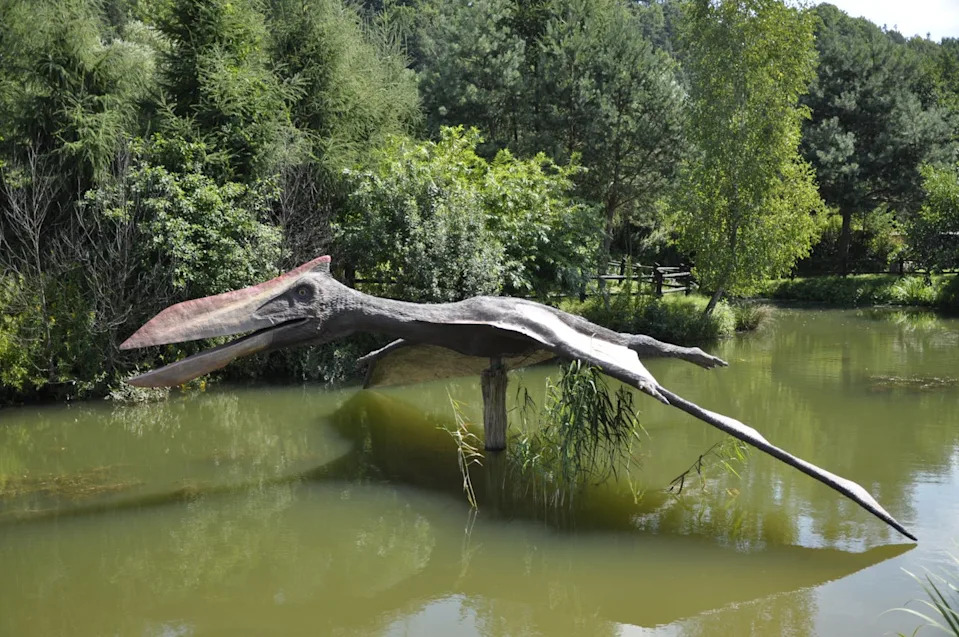Science
Ancient Giant Birds Soared Over Antarctica 40-50 Million Years Ago

Fossils uncovered on Seymour Island, located off the Antarctic Peninsula, reveal that giant birds roamed Antarctica approximately 40 to 50 million years ago. These findings challenge the current perception of Antarctica as an icy, desolate landscape, highlighting a time when the continent supported a much warmer and diverse ecosystem.
The research indicates that Seymour Island was home to various life forms, including frogs and plants like ferns and conifers. The fossil evidence suggests that the region was significantly less icy, fostering connections between Antarctica and other Southern Hemisphere continents. Among the discoveries are remnants of ancient birds, including penguins and their relatives, such as ducks, falcons, and albatrosses.
In a 2020 study led by paleontologist Peter A. Kloess from the University of California, Berkeley, a particular focus was placed on the pelagornithids, or “bony-toothed” birds, which were the giants of the skies at that time. These remarkable creatures had serrated, bony projections resembling teeth that aided in their hunting, allowing them to capture squid and fish efficiently.
Giants of the Sky
The size of pelagornithids was astonishing. While the largest living bird, the wandering albatross, has a wingspan of about 3.5 meters (11.5 feet), the fossils of Antarctic pelagornithids suggest a wingspan nearing 6.4 meters (21 feet). To visualize this, consider the length of a two-story building turned on its side. Throughout Earth’s history, powered flight has been achieved by only a few vertebrate groups, and pelagornithids represent one of the most significant evolutionary successes, alongside pterosaurs, which dominated the skies during the Mesozoic Era.
Birds first emerged while dinosaurs and pterosaurs were still prominent. The extinction event that occurred around 66 million years ago allowed birds to diversify significantly. Pelagornithids arose shortly after, during a period known as the Eocene Epoch (56 million to 33.9 million years ago), when competition for resources diminished. The earliest pelagornithid remains, found in New Zealand, were comparable in size to modern gulls, but the Antarctic species grew to be giants.
The Mystery of Extinction
Pelagornithids thrived for about 60 million years before their extinction occurred just prior to the Pleistocene Epoch (2.5 million to 11,700 years ago). The reasons for their disappearance remain unclear, as fossil records from that transitional period are sparse. Some paleontologists suggest climate change may have played a role in their decline.
The fossils examined in this research are fragments collected during expeditions by the University of California at Riverside in the 1980s. Although these fragments do not provide enough material to reconstruct an entire skeleton, they enable scientists to estimate the size and characteristics of these ancient birds. The skull of the pelagornithid is believed to have been around 0.6 meters (2 feet) long, with “pseudoteeth” measuring up to an inch tall. A second fossil, a foot bone from a different location on Seymour Island, is the largest known specimen of the entire extinct group, further supporting the idea of their impressive size.
These fossil discoveries underscore the significance of natural history collections. Field expeditions yield a wealth of specimens, but the time invested in preparing and studying these fossils often leads to a backlog in museums. Important insights can emerge not only from new discoveries but also from examining previously collected specimens that have yet to be thoroughly analyzed.
This research not only sheds light on the past ecosystems of Antarctica but also emphasizes the importance of continued paleontological study and preservation efforts in understanding the history of life on Earth.
-

 Technology5 months ago
Technology5 months agoDiscover the Top 10 Calorie Counting Apps of 2025
-

 Health3 months ago
Health3 months agoBella Hadid Shares Health Update After Treatment for Lyme Disease
-

 Health3 months ago
Health3 months agoErin Bates Shares Recovery Update Following Sepsis Complications
-

 Technology4 months ago
Technology4 months agoDiscover How to Reverse Image Search Using ChatGPT Effortlessly
-

 Technology1 month ago
Technology1 month agoDiscover 2025’s Top GPUs for Exceptional 4K Gaming Performance
-

 Technology3 months ago
Technology3 months agoElectric Moto Influencer Surronster Arrested in Tijuana
-

 Technology5 months ago
Technology5 months agoMeta Initiates $60B AI Data Center Expansion, Starting in Ohio
-

 Technology5 months ago
Technology5 months agoRecovering a Suspended TikTok Account: A Step-by-Step Guide
-

 Health4 months ago
Health4 months agoTested: Rab Firewall Mountain Jacket Survives Harsh Conditions
-

 Lifestyle5 months ago
Lifestyle5 months agoBelton Family Reunites After Daughter Survives Hill Country Floods
-

 Health3 months ago
Health3 months agoAnalysts Project Stronger Growth for Apple’s iPhone 17 Lineup
-

 Technology4 months ago
Technology4 months agoHarmonic Launches AI Chatbot App to Transform Mathematical Reasoning





















